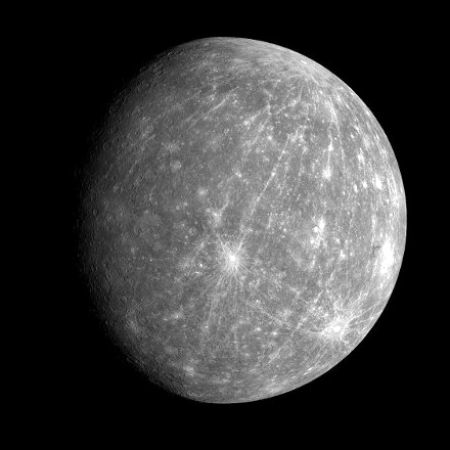Mercury (Planet)

© NASA/JPL/MESSENGER
Finder chart

Please wait
Loading 0/4
Click and drag to rotate
Mouse wheel to zoom in/out
Touch with mouse to dismiss
Click and drag the chart above to pan around the sky, or use the mouse wheel to zoom.
Click to enlarge.
From South El Monte
,
Mercury is visible in the dawn sky, rising at 04:59 (PST) – 1 hour and 42 minutes before the Sun – and reaching an altitude of 14° above the south-eastern horizon before fading from view as dawn breaks at around 06:18.
|
Name
Mercury
|
Object type
Inferior planet
|
Orbital elements [2]| Semi-major axis: | 0.39 AU |
| Eccentricity: | 0.205636 |
| Inclination: | 7.00° |
| Longitude ascending node: | 48.33° |
| Argument of perihelion: | 29.13° |
| Epoch of elements: | 01 January 2000 |
| Mean Anomaly at epoch: | 174.79° |
| Absolute mag (H): | -0.65 [1] |
| Slope parameter (n): | 2.00 [1] |
Derived quantities| Perihelion: | 0.31 AU |
| Aphelion: | 0.47 AU |
| Orbital period: | 0.24 years |
Sources| [1] | Robin M. Green, Spherical Astronomy, 1985, ISBN 0-521-31779-7 |
| [2] | Explanatory Supplement to the Astronomical Almanac, 2013, Urban & Seidelmann, Eds., Table 8.7, ISBN 978-1-891389-85-6 |
Visibility from South El Monte
All times shown in South El Monte local time.
Printable finder charts
Share



